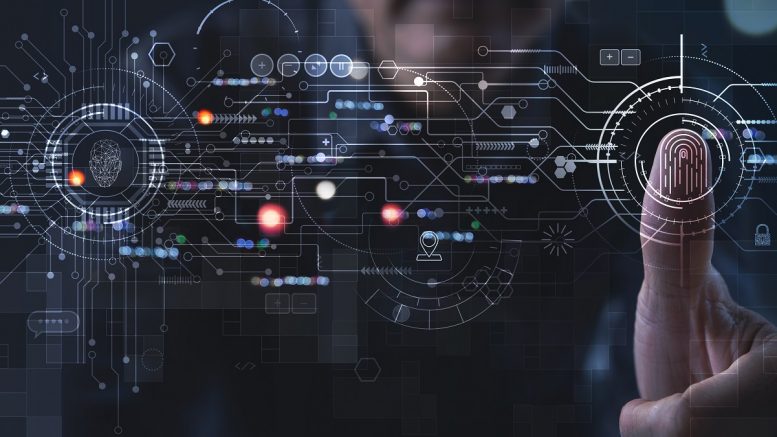Digital identity in the healthcare sector is one of the most exciting and interesting topics in the tech world. Although the topic had been hotly debated for some time in the professional circles, the dawn of COVID-19 has also brought the topic firmly to the attention of the general public. Moreover, the pandemic stimulated the development and implementation of this technology, albeit in a limited capacity. Perhaps the most well-known example of this is the creation of “vaccine passports”.
However, the full potential of digital identity in healthcare is a long way from being realised. Vaccine passports are just the tip of the iceberg. The scope of digital identity as it relates to healthcare is gargantuan, it could mean the end of identification errors – an issue with potentially fatal consequences, and one that’s a priority for most healthcare leadership teams.
But the road to mass implementation of digital IDs is by no means smooth, straight or without obstacles. The huge amount of time, effort, and money required to build a digital identification network aside, the security risks inherent with digital identity schemes – particularly in the healthcare sector – loom large over its prospects.
Hospitals and healthcare providers are already a tempting target for cybercriminals. The recent hacks on the NHS and a large French hospital immediately spring to mind. Ransomware groups in particular often target the healthcare sector as the consequences of downed systems aren’t merely financial but could result in loss of life. With so much at stake, victims in the healthcare sector are more likely to pay the ransom and get their systems back online.
With this in mind, it’s worth asking ourselves whether, as it stands, the risks that come with digital identity schemes outweigh the rewards. If healthcare providers are already a prime target for cybercriminals, would the veritable treasure trove of data ingrained in digital identity schemes only make them a more coveted prize? And would the consequences of an attack become even more dire, considering patient records would be rendered inaccessible?
Before we can answer these questions, we need to examine existing examples of digital identities in general and the application of this technology in the healthcare sector in particular.
The two most significant digital identity schemes currently in existence are Aadhar and e-Estonia. Aadhaar, initiated by the Indian government, is the largest digital identification system on the planet. e-Estonia, while not as large, has the broadest scope of any digital identification scheme, boasting novel offerings such as e-residency, e-business registration and even e-voting.
These two schemes are invaluable for the provision of healthcare in India and Estonia. So much so that India’s forthcoming universal healthcare initiative hinges almost entirely on Aadhaar. The other benefits are more obvious – lower risk of misidentification, immediate access to patient records, and the eradication of cumbersome physical documentation.
At first glance, Aadhaar and e-Estonia look pretty similar. Their purpose, benefits, and issues all tend to line up. However, there is one glaring disparity between the two. E-Estonia is a decentralised system, while Aadhaar operates out of a centralised database. This may not seem like a huge issue, but the distinction is incredibly important from a security perspective.
We’ll start with the more traditional, albeit somewhat antiquated, system. Centralised identity models are pretty self-explanatory – all information is stored in a single centralised database. The key issue here, from a security perspective at least, is that if an attacker manages to break into the system, they have access to everything. In Aardhaar’s case, that’s the personally identifying information (PII), including biometrics, of 1.2 billion people. However secure that database may be, in today’s climate it’s impossible to rule out a successful attack. The consequences of this would be unlike anything the world has seen. Not only would cybercriminals score the largest trove of biometric data on the planet, but Aadhaar going offline would bring India, the second most populous country on the planet, and its healthcare services to a standstill.
Decentralised identity models are a little more complicated. Obviously, this means that data isn’t all stored in one place, but how exactly is that done? e-Estonia employs blockchain technology – perhaps better known in the context of cryptocurrency – to ensure that their citizen’s health records are properly secured.
In some sense, e-Estonia’s e-Health Record does operate like a centralised database, pulling data from multiple healthcare providers and displaying them via the e-Patient portal. The difference is that blockchain’s cryptographic security features ensure that should Estonia be hacked, the digital ID’s of their citizens aren’t necessarily exposed, as is the case in a centralised model. Of course, blockchains aren’t bullet proof, but risk is brought down dramatically.
It is worth noting that both initiatives, they have raised serious concerns from security and data privacy professionals alike. A recent case study criticised both Aadhaar and e-Estonia for the failure of their respective governments to properly mandate a notification system in the event of a data breach. That same study expressed concern that Aadhaar and E-Estonia carried out “an excessive and unreasonable collection of data that flouts principles of data minimisation”.
So, how can we apply what we have learned from Aadhaar and e-Estonia, and apply it to digital identities in healthcare?
Realising the true potential of digital healthcare initiatives relies on decentralisation and user-owned data. e-Estonia, while it isn’t perfect, should serve as an example for building a digital identification infrastructure in the healthcare sector. Moving forward with digital identity means moving away from centralisation (sorry Aadhaar) and utilising blockchain technology.
Let’s return to the questions we posed earlier. If major concerns about developing digital identities include making healthcare a more attractive target for cybercriminals and worsening the consequences of attack, a decentralised model surely works to ease these anxieties. Of course, more data would be up for grabs, but decentralisation would mean that stealing or denying access to enough data to be worthwhile would mean hacking countless accounts and devices at once.
In short, the development of digital identities in the healthcare sector shouldn’t be hindered by cybersecurity fears, but neither should those fears be ignored. Anxieties surrounding these initiatives should inform their development and inspire thought leaders to build security into identity models.
By Alan Radford, Global Identity and Access Management Strategist at One Identity





